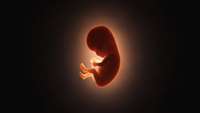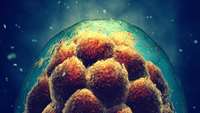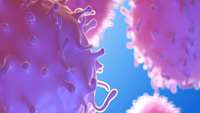Keratins are asymmetrically inherited fate determinants in the mammalian embryo
To implant in the uterus, the mammalian embryo first specifies two cell lineages: the pluripotent inner cell mass that forms the fetus, and the outer trophectoderm layer that forms the placenta1.
Researchers use cutting edge technology to bioprint mini-kidneys
Researchers have used cutting edge technology to bioprint miniature human kidneys in the lab, paving the way for new treatments for kidney failure and possibly lab-grown transplants.
Induced vascular progenitor cells enhance functional recovery in ischemic vascular disease model
A research team, affiliated with South Korea's Ulsan National Institute of Science and Technology (UNIST) has succeeded in generating bipotential self-renewing iVPCs by direct lineage conversion.
iPSC differentiation controlled by terahertz pulses
Researchers from Kyoto University’s Institute for Integrated Cell-Material Sciences (iCeMS; Japan) and Tokai University (Tokyo, Japan) have developed a novel tool that uses pulses of terahertz light to alter gene expression in stem cells – paving a new avenue for the development of stem cell research and regenerative therapy.
Larger and faster organoid growth achieved using cell squeezing
Researchers at Massachusetts Institute of Technology and Boston Children’s Hospital (both MA, USA) have revealed that physically squeezing cells (also referred to as cell squeezing), in addition to crowding their contents, can trigger them to grow and divide faster than they normally would.
Scientists regenerate skin with stem cells to see how DNA defects in kids cause cancer
Physicians and scientists at Cincinnati Children's Hospital Medical Center used new stem cell technology to regenerate and study living patient-specific skin in the lab, giving them a precise close up view of how inherited DNA defects cause skin damage and deadly squamous cell carcinoma in children and young adults with Fanconi anemia (FA).
Young’ stem cells identified in old mice using a new approach
A collaborative study involving researchers from Lund Stem Cell Center (Sweden) and University College London (UK) has identified a novel method of isolating ‘young’ stem cells present in old mice. Their research demonstrates that activity of mitochondria may be a stronger indicator of stem cell fitness than age.
'SILENT' MUTATIONS GAVE THE CORONAVIRUS AN EVOLUTIONARY EDGE
We know that the coronavirus behind the COVID-19 crisis lived harmlessly in bats and other wildlife before it jumped the species barrier and spilled over to humans.












